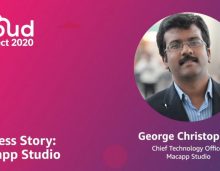Mingsheng Hong & Philip Wickline – Strata-Hadoop World 2012 – theCUBE
Hadapt chief data scientist Mingsheng Hong and chief technology officer Philip Wickline showcased the latest release of their flagship software in theCube during Strata Conference + Hadoop World last month.
Hong fires up the demo. He’s showing a single-node deployment of Hadapt 2.0 on his MacBook from within Tableau, which powers the easy-to-understand interface that the end user sees. The big data engine and BI solution each run in two separate Linux VMs.
The Tableau UI is displayed above a few Hadapt logs that Hong discusses for the sake of the demo. He points out that they display the real-time querying and loading that’s going on simultaneously in the background. The SQL queries themselves are generated by Tableau before being processed by Hadapt.
Hong then goes into detail about the technology, boasting that the platform doesn’t require a multi-million dollar big iron to run. It’s designed for large scale enterprise systems, but it can run on a laptop just as well. The Hadapt program on his machine is natively integrated with Tableau, HBase and Mahout, a popular Hadoop-based machine learning engine.
It takes the data scientist a couple of seconds to load the graphs, which, in this case, outline social media reactions to a brand. Hong’s colleague Wickline chips in to emphasize the real-time aspect, noting that the software provides a familiar interactive BI setting that the average business user or analyst is already comfortable with.
Hong moves on to provide a glimpse of some of Hadapt’s core features. Among them is the ability to easily highlight a section of a graph and see a breakdown of the relevant metrics for that period, demographic or region.
All this functionality is available in one bundle. Wickline says that enterprises can get a hold of the same analytical capabilities by taking the DIY approach, but adds that this usually requires a much bigger investment as well. There’s also the matter of added complexity and the inconvenience that can be caused by having to move data around between different systems.
